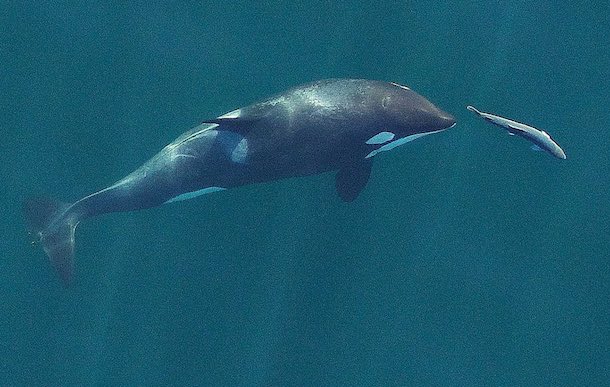forum
library
tutorial
contact

Columbia Basin EIS
Missed Orca in the Room
by Giulia C.S. Good Stefani
NRDC Blog, April 14, 2020
|
the film forum library tutorial contact |

|
Columbia Basin EIS
by Giulia C.S. Good Stefani
|
Southern Residents are "a species whose extinction is almost certain
in the immediate future because of a rapid population decline."
-- NOAA Fisheries, Species in the Spotlight
 Yesterday the public comment period ended on a nearly 8,000 page draft Environmental Impact Statement (EIS) for the Columbia River System Operations, which includes fourteen federal dams and reservoirs in the Columbia River Basin. In reviewing the document, I found several concerning shortfalls and omissions. The thing that jumped out at me immediately is the near total absence of any discussion about the foreseeable impacts of the Columbia Basin dams on the Southern Resident orcas. If you add up the smattering of sentences on whales in the Columbia River System Operations draft EIS, it adds up to roughly a page on orcas.
Yesterday the public comment period ended on a nearly 8,000 page draft Environmental Impact Statement (EIS) for the Columbia River System Operations, which includes fourteen federal dams and reservoirs in the Columbia River Basin. In reviewing the document, I found several concerning shortfalls and omissions. The thing that jumped out at me immediately is the near total absence of any discussion about the foreseeable impacts of the Columbia Basin dams on the Southern Resident orcas. If you add up the smattering of sentences on whales in the Columbia River System Operations draft EIS, it adds up to roughly a page on orcas.
I wasn't the only one to notice the federal agencies' failure to address the orca in the room.
A group of the world's leading Southern Resident orca experts submitted a technical comment letter yesterday, in which they explained why talking about Columbia Basin salmon survival and recovery is also talking about orca recovery. The two, they point out, are intricately linked.
"The draft EIS ignores a large body of science, some of it conducted by NOAA itself, that finds that we must recover Columbia Basin spring Chinook runs to avoid extinction of the Southern Resident killer whales and improve reproductive success," said Dr. Sam Wasser of the University of Washington, Center for Conservation Biology, in a press statement released with the comment letter.
The Southern Residents orcas live off the Washington, Oregon, and Northern California coast and in the Salish Sea. They are an obligate predator of fish, with a strong preference for fatty Chinook salmon. But Chinook salmon are an endangered species too. Columbia Basin Chinook face a number of threats, but one of the largest is dams. Dams like Chief Joseph and Hells Canyon have blocked migrating salmon from huge areas of historical spawning habitat (1,100 miles and 300 miles respectively). Other dams in the Basin, like the lower Snake River dams, impede passage and create hot, slow-moving reservoirs that take a significant, often deadly, toll on the fish.
The draft EIS concludes that restoring the lower Snake River by breaching the earthen portion of its four dams would result in "a moderate to major increase" in adult salmon over the long term that would "increase the prey base available to . . . killer whale[s]." However, the agencies conclude -- without addressing any of the science to the contrary -- that this would only impact Southern Residents in a "minor" way.
Leading orca scientists disagree. In their letter, the orca experts explain that the mouth of the Columbia River is a documented "hot spot" for orca foraging and that "Chinook are the primary species consumed on the outer coast and that over half the Chinook consumed by the Southern Residents are from the Columbia River Basin." They go on to conclude that "[w]hile Lower Snake River dam breaching by itself may not be enough to recover [Southern Resident orcas], in our expert opinion, recovery of this population of whales is not achievable without lower Snake River dam breaching."
By the federal government's own assessment in other documents, the Southern Residents are "a species whose extinction is almost certain in the immediate future because of a rapid population decline," and under current conditions, NOAA projects a continued downward trend over the next 50 years. The draft EIS' preferred alternative, which offers at best -- in the agencies' own words -- "small, incremental improvements" would almost certainly result in the extinction of this beloved population of whales.
Management of the Columbia Basin's hydropower in a way that doesn't drive salmon to extinction, meets the needs of impacted communities, meets tribal treaty and trust obligations, and fuels the clean energy transition is undeniably one of the most complex challenges of our time. To break the decades of deadlock over dams and salmon will require an integrity of information, an honest hard look at alternatives, and a meaningful opportunity for engagement in decision-making. And it can't leave the whales behind.
learn more on topics covered in the film
see the video
read the script
learn the songs
discussion forum
